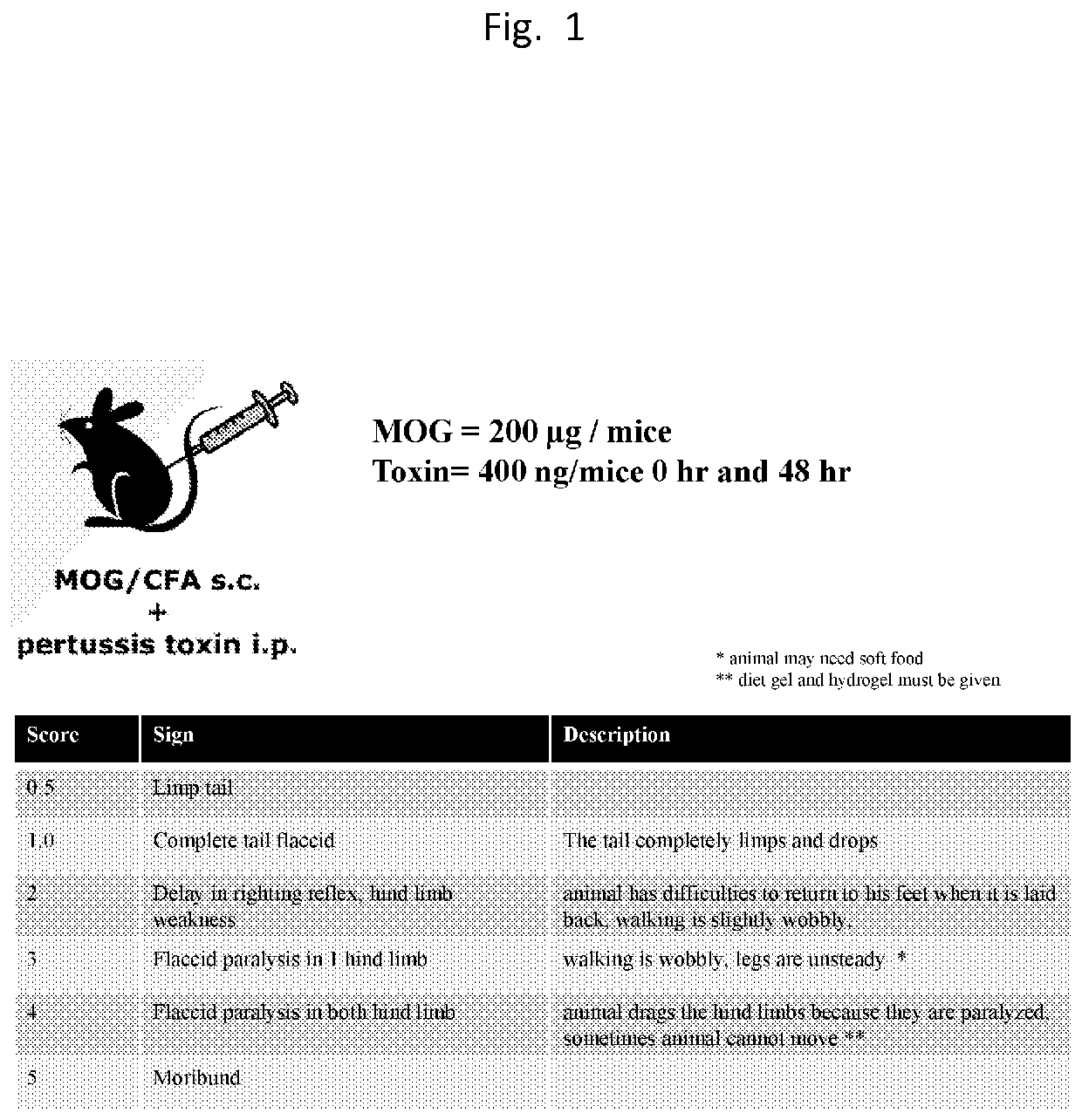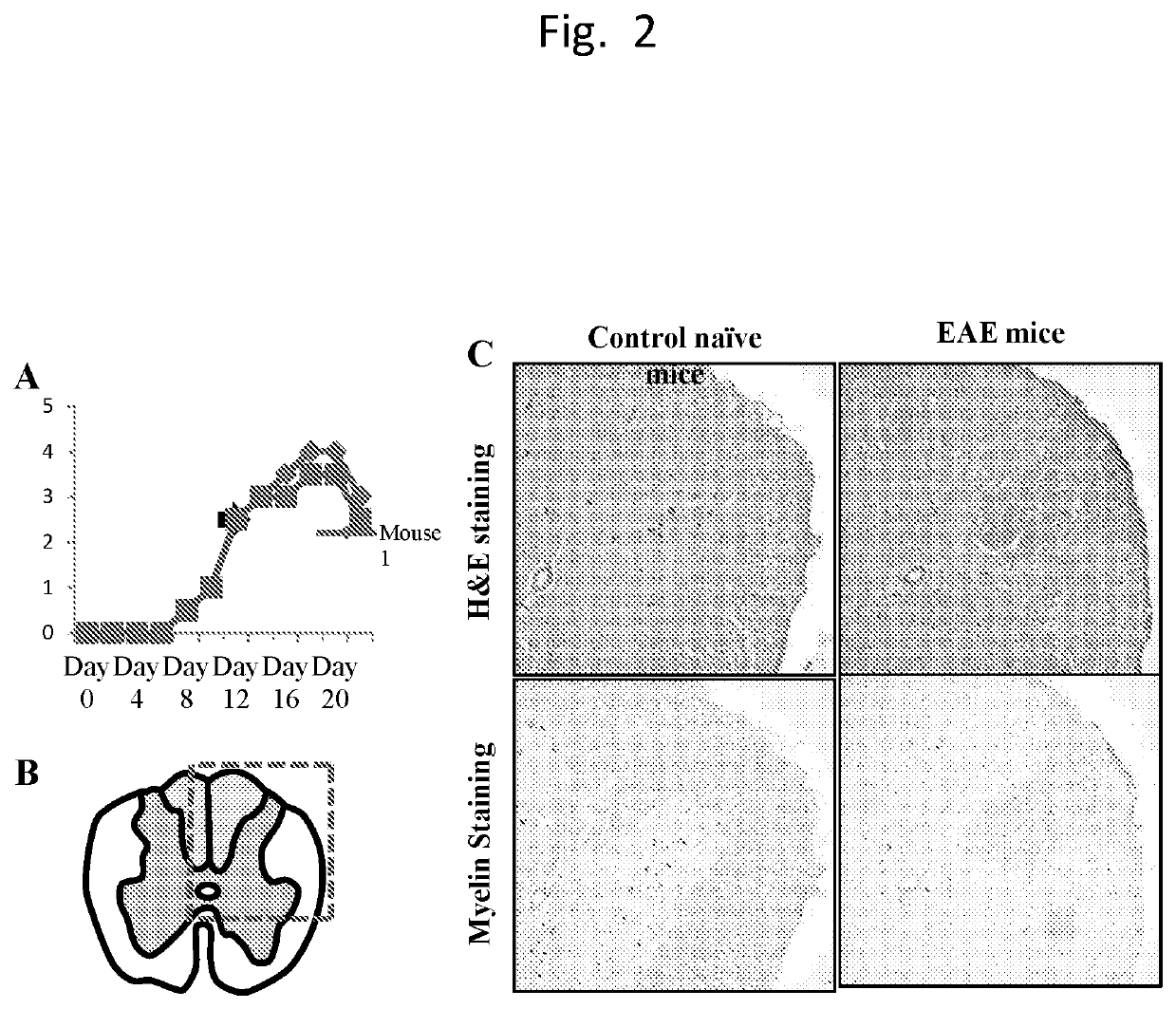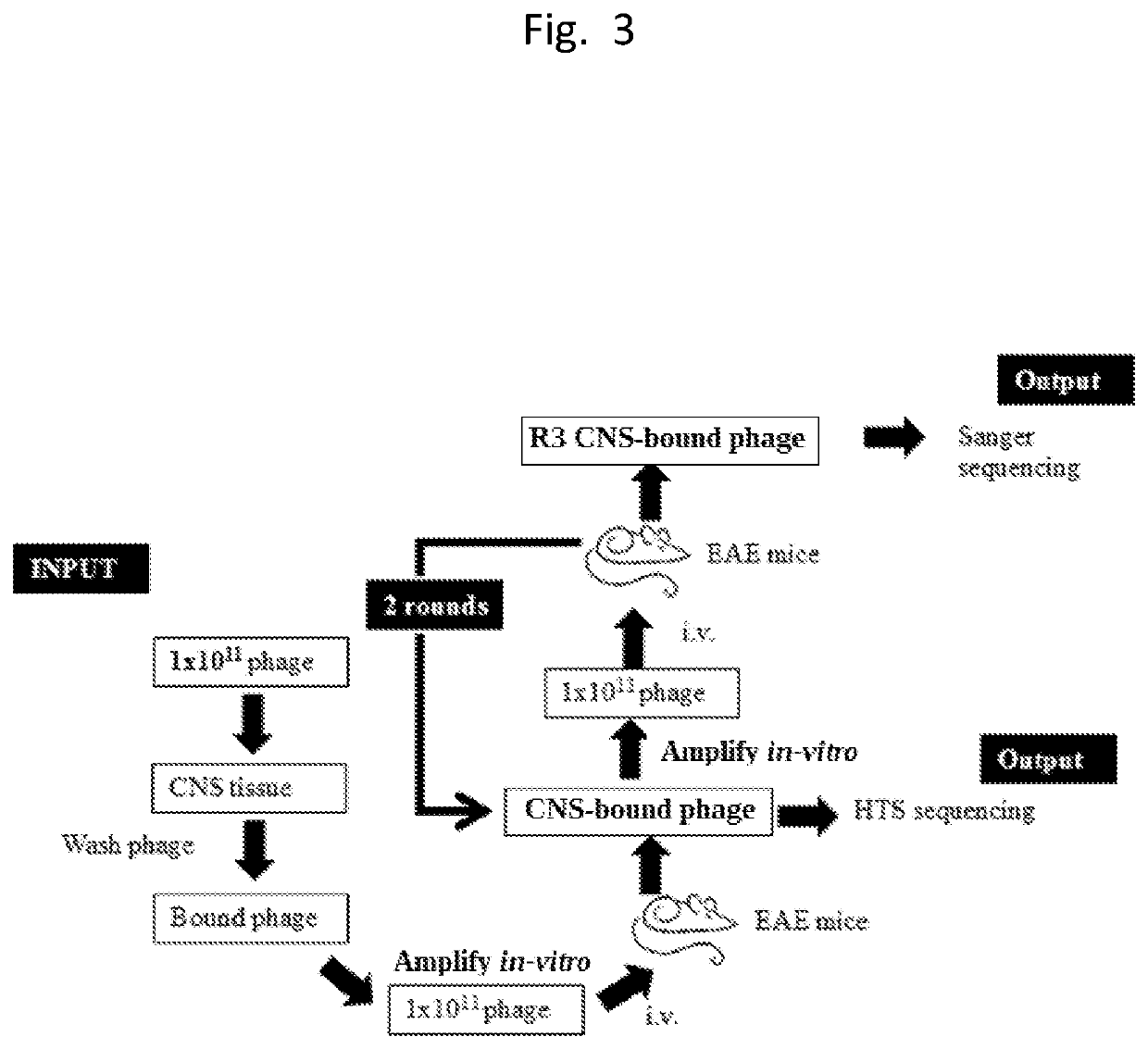Central nervous system homing peptides and uses thereof
a technology of central nervous system and homing peptide, which is applied in the field of homing peptides, can solve the problems of shortening the effective dosage of drugs, shortening the drug delivery and/or response time, and inflammation and tissue damage, and achieves the effect of facilitating the delivery of therapeutic agents
- Summary
- Abstract
- Description
- Claims
- Application Information
AI Technical Summary
Problems solved by technology
Method used
Image
Examples
example 1
of Central Nervous System Homing Peptides Using Phage Display
[0122]1×1011 phage were first incubated with tissues from CNS for ex-vivo screening, unbound phages were washed off and bound phages were rescued using E. coli host strain of BLT5403. Phages were amplified and equal amount of phage were injected i.v. in control and disease bearing mice with score of 2 to 3. The phages were allowed to circulate for 15 min and animals were euthanized, perfused extensively and CNS tissues were harvested. The CNS tissues were homogenized and bound phages were rescued using E. coli and the DNA sample was prepared and sent for HTS sequencing. The in-vivo cycle was repeated total of 3 times for manual sequencing and sequencing was performed.
Materials and Methods
Phage Vector
[0123]T7415-1b phage vectors displaying CX7C peptides, where C is cysteine and X is any amino acid residue, designed to display a constrained cyclic loop within the pIII capsid protein, were obtained from Dr. Erkki Ruolashti an...
example 2
maging of EAE Mice Using Central Nervous System (CNS)—Homing Peptides that were Originally Identified by Phage Library Screening
[0130]The previous results of in vivo phage library screening in EAE mice showed that certain phage clones were enriched in the central nervous system (CNS) of EAE mice. The peptides encoded by these phage clones included peptide CRGGKRSSC (SEQ ID NO:14) (denoted as “KRSS” (SEQ ID NO:1)). The goal of this experiment was to determine the in vivo homing property of the KRSS (SEQ ID NO:1) peptide in EAE mice compared with control mice. For this purpose, peptide KRSS (SEQ ID NO:1) was conjugated with a dye, Cy7, which can be detected in vivo by an equipment known as Xenogen. Furthermore, the homing profile of KRSS (SEQ ID NO:1) was compared with a control peptide labeled with Cy7.
Methods
[0131]Near Infrared (NIR) Cyanine 7 (Cy7) dye-labeled test peptide CRGGKRSSC (SEQ ID NO:14) or control peptide was injected into the tail vein of diseased (EAE) mice and naive (...
PUM
| Property | Measurement | Unit |
|---|---|---|
| output power | aaaaa | aaaaa |
| volume | aaaaa | aaaaa |
| temperature | aaaaa | aaaaa |
Abstract
Description
Claims
Application Information
 Login to View More
Login to View More - R&D
- Intellectual Property
- Life Sciences
- Materials
- Tech Scout
- Unparalleled Data Quality
- Higher Quality Content
- 60% Fewer Hallucinations
Browse by: Latest US Patents, China's latest patents, Technical Efficacy Thesaurus, Application Domain, Technology Topic, Popular Technical Reports.
© 2025 PatSnap. All rights reserved.Legal|Privacy policy|Modern Slavery Act Transparency Statement|Sitemap|About US| Contact US: help@patsnap.com



